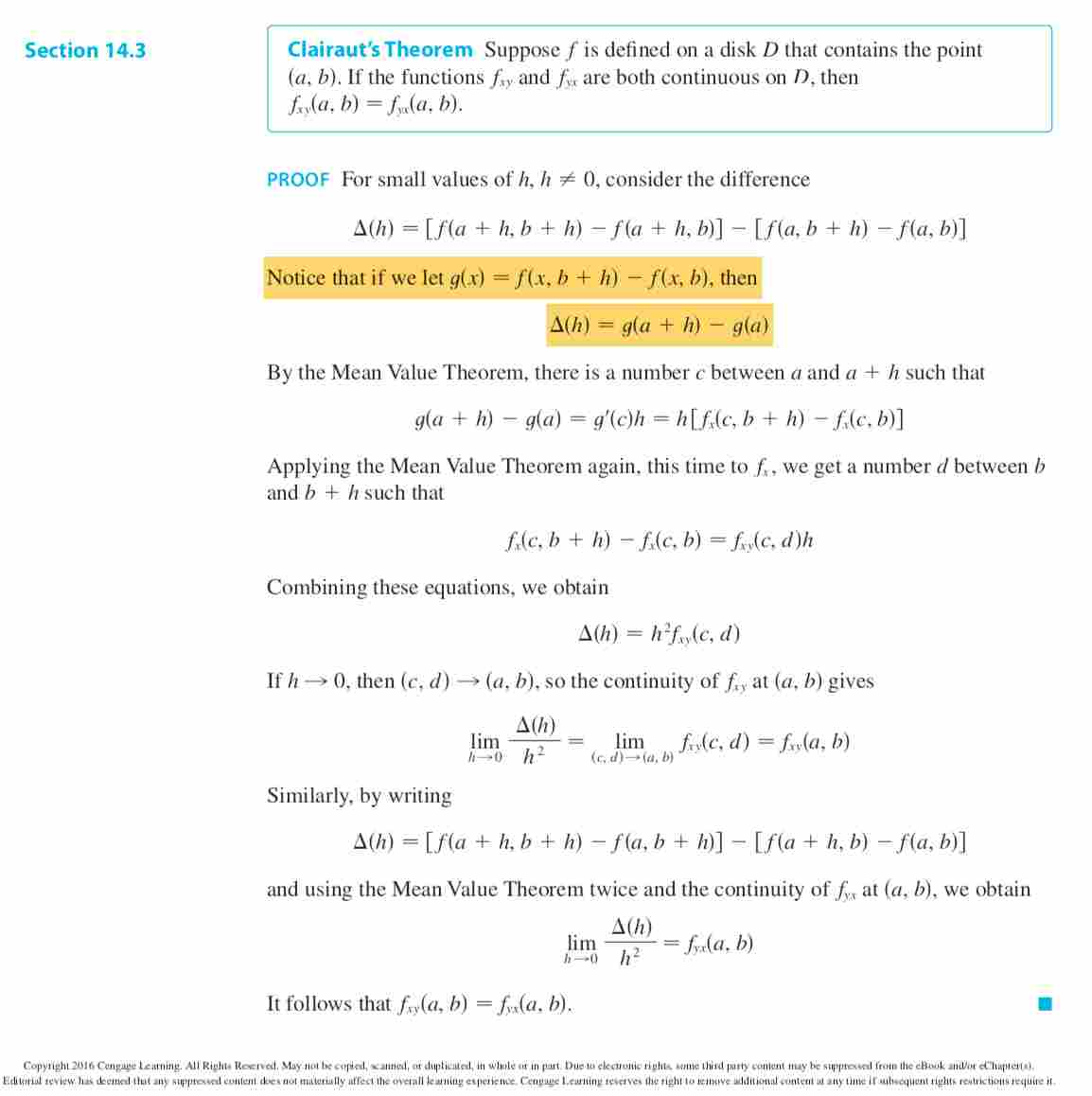A sufficient condition for differentiability
Lemma 188.1.
e95072A vector valued function is differentiable at iff each is differentiable at .
Proof.
Let be differentiable at . Then,
where as . On writing the component wise equations, we find
where as . Thus, is differentiable at , and .
Conversely, if each is differentiable at with , then the linear transformation given by
satisfies the first order Taylor formula for , and hence is differentiable at with derivative .□
Definition 188.2.
A differentiable mapping of an open set into is said to be continuously differentiable or on if is a continuous mapping of into .
Theorem 188.3(Rudin (1976) 9.21).
c71febSuppose maps an open set into . Then iff all partial derivatives exist and are continuous for , .
Proof.
Fix . By Theorem 185.3, . Hence,
Thus, the partial derivatives are continuous.
For the converse, by Lemma 1, it suffices to consider the case . Once we show differentiability, continuity of will follow trivially (see Remark 172.5).
So consider a map such that exist and are continuous for . Fix . If is differentiable at , we know that is given by ; so we just have to show that satisfies the definition of the derivative, that is,
Let . Let . The continuity of allows us to choose such that
Suppose , . Define and for . Then
Since for and since is convex, the segments with end points and lie in . Use the mean value theorem to write the th summand as
for some . It follows that
□
Turns out you can slightly relax the hypothesis and still have to be differentiable.
Theorem 188.4(Apostol (1985)).
Assume that one of the partial derivatives exist at and that the remaining partial derivatives exist in some -ball and are continuous at . Then is differentiable at .
Proof.
The existence of implies the existence of every and the continuity of implies the continuity of each . Thus, thanks to the preceding lemma, it suffices to prove the theorem when is real valued.
WLOG, assume that exists at and that exist in and are continuous at . We know that if is differentiable at , then its derivative is given by the Jacobian matrix, which in this case is the gradient . Thus, we only have to prove that
where as .
Let , where and . We keep small enough so that lies in the ball in which the partial derivatives , …, exist. Let .
Write as a telescoping sum:
where , , , …, .
The first term in the sum is . Since the two points and differ only in the first component, and since exists, we can write
where as .
For , the th term in the sum is
where . We could try to proceed as before: notice that and differ in only the th component and that exists, so
where as . But this is not helpful; we need , not . This is where we use the continuity hypothesis. From the vanilla mean value theorem, we have
where . Note that since as , as . Now, since is continuous at ,
where as .
We finally have
where
□
Note that this is not a necessary condition for to be differentiable.
A sufficient condition for equality of mixed partial derivatives
Definition 188.5.
Theorem 188.6.
If both partial derivatives and exist in an -ball and if both are differentiable at , then
Proof.
In light of the previous lemma, it is sufficient to prove the theorem for real valued. Also, since only two components are involved, it suffices to consider the case . Assume ; the same argument can be repeated for arbitrary .
Choose so that the square with vertices , and lies in the -ball . Consider the quantity
We will show that is equal to both and .
Define and note that
The existence of in implies the differentiability of the map on . Similarly, the map is differentiable on . It follows that is differentiable on . From the one-dimensional mean value theorem, we have
where . Since is differentiable at , we have the first order Taylor formulas
and
where and as . So,
where . Since ,
so
Next, define and note that . The same procedure yields .□
Theorem 188.7(Corollary).
If both partial derivatives and exist in an -ball and if both and are continuous at , then
As in the previous theorem, it suffices to prove this when and is real valued. The proof is very similar to the previous one; use a second application of MVT.
